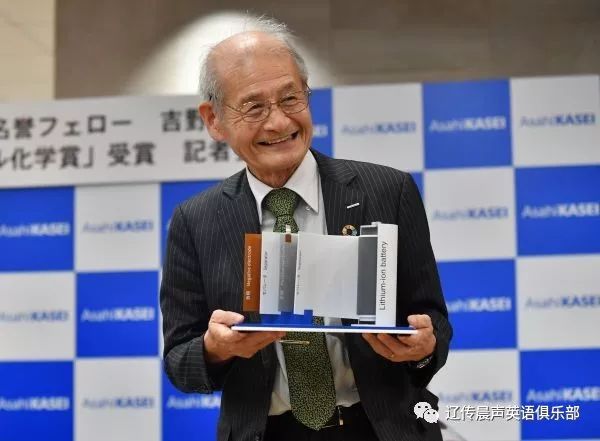Today we would like to introduce a Noble laureate. he was born in 1923.(今天我们要为大家介绍一个诺贝尔奖的得主,他出生于1923年)
October 9, 2019, he was awarded the Noble Prize in chemistry. Yes, John Goodenough, who, at 97, has the distinction of being history's oldest Noble laureate.
2019年10月9日,他被授予诺贝尔化学奖,没错,约翰-古迪纳夫,这位如今97岁高龄的老人是最年长的诺贝尔奖获得者。
John knew about Stan's work with titanium disuflide cathodes and predicted that a metal oxide cathode, instead of a metal sulfide one, would enable more powerful batteries.
约翰知道斯坦利有关阴极使用二硫化钛的研究,并预测用金属氧化物代替金属硫化物作阴极会产生更强劲的电池。
His group at Oxford University demonstrated that a battery using a cathode made from lithium cobalt oxide., another layered material, could produce as much as 4 V.
他在牛津大学的团队证明电池的阴极使用锂钴氧化物,这是另一种分层材料,其电池电压可以达到四伏。

That was a significant jump over Stan's 2.5 V bettery. The final piece of the battery puzzle came from the lab of Akira Yoshino in Japan, who found that lithium ions could also slip in and out of petroleum coke, a carbon-rich material derived from oil refining.
对于斯坦福的2.5伏而言,是一个巨大的提升。电视的最后在日本吉野彰的实验室得到解决,他发现原子同样可以自由出入于石油焦,一种从石油中提炼出来的富碳物质。
That discover enabled scientists to replacethe reactive lithium anode with this safer material. In 1985, Akira's group at Asahi Kasei used all these advances to assemble the first commercially viable the first lithium-ion battery. A version of this battery first entered the market in 1991. Since then, lithium-ion batteries have revolutionized our lives.
科学家利用这一发现将电池中不稳定的锂阳极用这种更安全的物质代替。1985年,吉野彰的团队在旭华成株式会社利用所有前言技术组装了第一块能商业化的锂离子电池。1991年,这种电池首次进入市场。从此,锂离子电池就彻底改变了我们的生活。